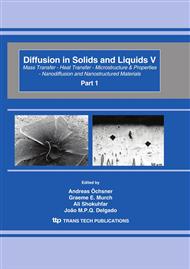p.1140
p.1146
p.1152
p.1160
p.1167
p.1171
p.1177
p.1183
p.1190
Film Formation via Plasma Electrolyte Oxidation of Ti and Ti-5Mo-4V-3Al Alloy in High Alkaline Solutions
Abstract:
This work investigates the characteristics of oxide films formed on Ti and the Ti alloy through a plasma electrolyte oxidation (PEO) process in highly alkaline medium in the presence or absence of phosphate ions. The obtained coatings showed different characteristics when they formed in high alkaline phosphate solutions particularly was anatase for Ti and rutile/titanium phosphate for the Ti alloy layer. Films formed in aqueous solution without KOH caused a reduction in current density and also reduced the number of microarcs, while in electrolytes with high OH- concentration, the current was low and the density of sparks was significant.
Info:
Periodical:
Pages:
1167-1170
Citation:
Online since:
April 2010
Authors:
Keywords:
Price:
Сopyright:
© 2010 Trans Tech Publications Ltd. All Rights Reserved
Share:
Citation:


